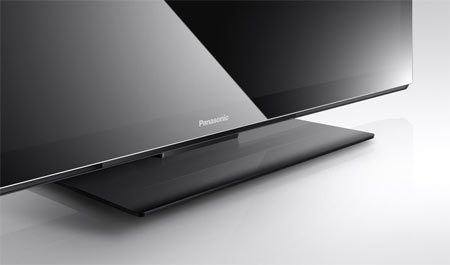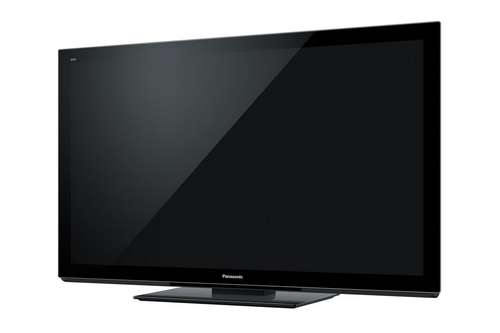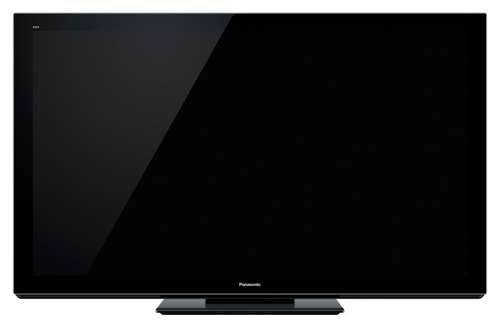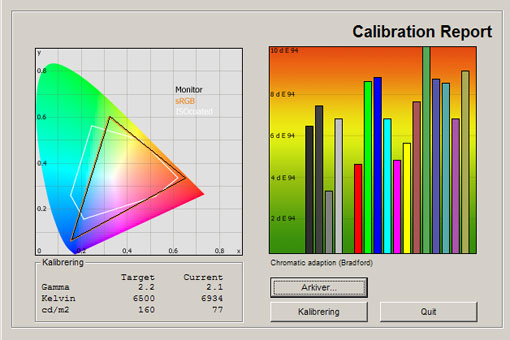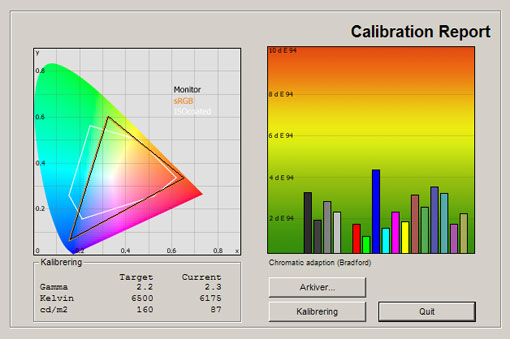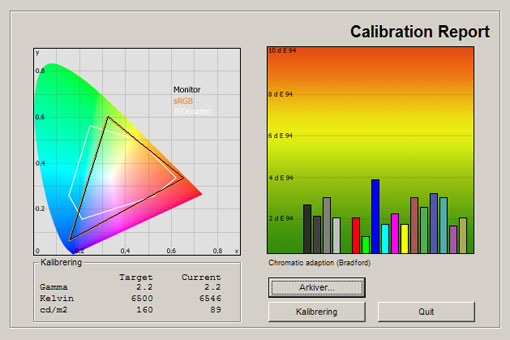Review: Panasonic VT30
Panasonic VT30 review
VT30 is the new flagship model from Panasonic and we are excited to finally have it in our own testing room. We saw VT30 in London earlier this year and with a new slim one-sheet-of-glass design, a new improved Infinite Black Pro 2 panel and a new Smart TV interface Viera Connect & Viera Market, VT30 certainly looks interesting on paper.
But has Panasonic managed to make further improvements to picture quality compared to last year’s VT20/VT25 model? And is VT30 a better TV than the cheaper GT30 range that we tested last month? And what about compared to Samsung’s plasma TVs? FlatpanelsHD will find out in this Panasonic VT30 review.
Panasonic VT30 is available in 55 and 65 inches in the US called TC-P55VT30 and TC-P65VT30. In EU VT30 will be available in 42, 50, 55 and 65 inches called TX-P42VT30, TX-P50VT30, TX-P55VT30 and TX-P65VT30. The TV is basically the same.
Subscribe to our Newsletter, RSS feed or twitter to receive notice when new reviews are online. We’ll soon publish our Samsung D8000, Eizo SX2762W, Panasonic G30 and LG PZ950 reviews as well.
Size: 50" widescreen Resolution: 1920x1080 Response time: 0.001 ms Contrast ratio: - Brightness: - Color support: 16,7 million colors Signal processing: 8 for each color Viewing angles (H/V): Angle Free Dot pitch: Panel type: Plasma TV Wall mounting: Swivel stand: Dimensions (HxWxD): 73.3cm x 120.2cm x 3.7cm (without stand) Weight 35.0 kg Built-in speakers: Input formats: 480p/i, 576p/i, 720p, 1080i & 1080p (50, 60 & 24p) Inputs VGA DVI (but possible to convert through HDMI)
Audio (type) (Audio in/out)
SCART (1 input)
S-video Composite Component HDMI (4 inputs, 1 HDMI 1.4)
Other Outputs Audio (type) (1 output, headphones)
SCART S/PDIF (optical)
Other Tuners Analogue DVB-T DVB-T (MPEG4) DVB-C DVB-C (MPEG4) DVB-S DVB-S (MPEG4) Other Price and retailer:
| US retailer | UK retailer |
 |
Our first impressions
Panasonic has taken a completely new design route in 2011 and VT30 comes with a new elegant one-sheet-of-glass design. The front glass covers plasma panel and bezel and along the edge there is a silver line.In 2011 Panasonic has also slimmed down their TV and VT30 is approximately as thin as Samsung’s plasma TVs. It looks great and in my opinion far more elegant than any previous Panasonic plasma TV.
All inputs are also pointing either to the side or down. This is great news based on the fact that Panasonic’s previous plasma TVs had inputs facing out towards the back wall.
On the side of the TV we found some button. There’s also an on/off switch on the front of the TV that is actually quite hard to find the first time you want to turn on VT30.
I heard light buzzing form the back of the TV and it seems that Panasonic has not fixed this issue completely. I heard nothing from a 1-2 meter distance.
Test tools
Our TV signal is DVB-S (satellite) from Canal Digital and DVB-T (terrestrial). We also have an analogue TV connection. Testing is done with the DVE (digital video essentials) and Peter Finzel test DVD. Testing is also done with DVD, TV, Blu-Ray and Media center/PC.We use our own monitorTest. The software supports some of the traditional test patterns used to evaluate displays as well as some new and unique test patterns developed by the people here on FlatpanelsHD.
Sony PlayStation 3 is our Blu-Ray player.
All contrast measurements are based on the ANSI methodology.
Functionality
Panasonic’s new remote control is more elegant and less ugly, but it only comes bundled with VT30. In my opinion it’s a huge improvement in terms of design and feel.It feels heavier, thus demonstrating higher build quality. It still has far too many buttons but they are large and easy to find. It even has the same overall look as the TV, which makes it a perfect match.
The functionality in VT30 is the same that we found in GT30. This means DLNA with video, music and image support, USB recording (in Europe) and the new Viera Connect Smart TV platform with Viera Market.
I don’t want to repeat everything here so please see our Panasonic GT30 review and the section called Functionality for more details. However, we did find one new feature; you can now record directly onto a SD card (or USB HDD but that was also possible in the 2010 models).
A new interesting function is the automatic calibration system incorporated in VT30. We did not have the required calibration box supplied by SpectraCal for this test but if you want to learn more see this article: Panasonic VT30 with automatic ISF calibration
Calibration settings
In the menus Panasonic VT30 has these picture setting options: contrast, brightness, colour, sharpness, color balance, vivid color, color remaster, eco mode, P-NR, and Picture in Picture.
In the advanced menu you can control: white balance (RGB), RGB IRE, gamma, IFC (Intelligent Frame Creation), Resolution Enhancer, 16:9 overscan, and pixel orbiter.
You can also choose from these picture modes: Dynamic, Normal, Cinema, THX, Game, Photo, Professional1, and Professional2.
There is an advanced RGB IRE setting options menu when one of the two professional presets have been selected. In here advanced users can calibrate the picture to near perfection.
Energy consumption
Compare power consumption measurements on different TVs and monitors with our interactive power consumption applet here.Below I have measured energy consumption on the 50-inch Panasonic VT30.
 |  | |
| Standby | 0.1 W | 0.1 W |
| SD+HD | 157 W | 173 W |
| 3D | 204 W | 204 W |
After calibration I measured power consumption to 173 W. That is slightly lower than on the VT20/VT25 from 2010.
I have also included a measurement of the 3D energy consumption. In the 3D mode the backlight is often maxed out to compensate for the reduction in light from the 3D glasses. Therefore the 3D mode also typically consumes more energy.
Calibration on Panasonic VT30
Below you can see an out-of-box measurement on Panasonic VT30 in the Standard picture preset without Eco mode.The graph says this:
The number on the left is the delta value. Delta is a difference between two factors; here it’s the difference between the measured color on the panel and the actual color that is our target.
Out-of-box picture quality is not very pleasing and colors are too oversaturated because of wrong gamma and the dynamic color circuits that are activated by default.
I measured gamma from 1.6 in the dark shades to 2.8 in the bright shades, which means that bright colors are too bright and oversaturated and dark colors are too dark (details in for example dark movie scenes are crushed).
Color temperature is slightly too high and I measured 6934 Kelvin. Our target value is 6500 Kelvin.
I now changed to the THX preset and took a new measurement,
The THX preset is very accurate and we also expected that. Panasonic - and LG – has been using THX presets for a few years now and they always provide users with accurate, natural looking colors and great picture quality.
There’s no need to elaborate because gamma is very close to our 2.2 target, color temperature is very close to 6500 Kelvin and the brightness value is optimal for movie watching and gaming in dark rooms.
I now did a calibration on Panasonic VT30. Here’s my result.
I managed to improve thing a bit compared to the THX preset but the THX preset is a good choice for all users wanting to have very accurate picture settings.
Gamma is now closer to 2.2 and the color deviations (seen in the graph to the right) are very low. I did not take advantage of the most advanced RGB IRE settings, simply because the required values vary from one VT30 to the next.
Below are my calibrated settings.
 | |
| Picture preset: | Professional1 |
| Contrast | 36 |
| Brightness | +2 |
| Colour: | 30 |
| Sharpness: | 3 |
| Color Remaster: | Off |
| Eco | Off |
| P-NR | Off |
| Gamma | 2.2 |
| Intelligen Frame Creation | On/Off |
| Resolution Enhancer | Off |
| 16:9 Overscan | Off |
| R-Gain | -4 |
| G-Gain | -4 |
| B-Gain | +4 |
| R-Cutoff | 0 |
| G-Cutoff | 0 |
| B-Cutoff | +1 |
I changed the RGB values to compensate for any color deviations but my changes are minimal compared to the THX mode. I have also increased the setting called brightness marginally to improve gamma.
Picture quality on Panasonic VT30
In this section I go through picture quality with the calibrated settings.Panasonic has working on reducing reflections on VT30. The high-end models from 2010 had a good filter and the same applies to VT30. The filter takes care of light coming from the top of the panel (such as ceiling light) and therefore the panel also looks darker from the top. But this filter also helps to reduce reflections.
The new plasma panel structure that Panasonic has incorporated in the recent years has also helped to make pictures look less dead and dull in brightly lit rooms. This is a problem when compared to typical LCD/LED (without glass fronts) models that are not affected by surrounding light the same way. But VT30 definitely performs well in this area and better than previous Panasonic TVs. However, the plasma panel still has reflections.
I measured color accuracy in the previous section and here I want to examine color gradation (how well the TV distinguishes the many colors). As always we use smooth gradients to examine color gradations.
Color gradation on VT30 is not perfectly smooth and we still haven’t seen a plasma TV without issues in this area (although Pioneer was close). In the darker end of the color gradient we did see some “bands”, which means that not all colors are perfectly distinguished. However, VT30 is definitely a good performer in this area but I have seen better results in terms of color gradation from some of the high-end LCD/LED models.
“Bands” in gradients also implies that banding might occur in practical use – or on some Panasonic models it tends to be more visible with 50 Hz inputs, hence the name 50 Hz bug.
One of the reasons is that plasma panels use “dithering” to create new colors. Basically this means that some colors are being mixed (two colors alternating very fast in pixel areas) to reproduce new colors. Dithering is also visible on VT30 from a close distance. It’s not a big deal because from a typical seating distance it’s impossible to see but it’s part of the “color banding” issue so I thought I should mention it. However, I actually think that it is lower than on for example GT30 that we tested last month and slightly lower than on Samsung’s plasma TV (or to be more precise, it looks like a different dithering algorithm).
SD picture quality is impressive. I can honestly say that Panasonic still manages to squeeze out even small details from the softer SD pictures and I think that Panasonic’s plasma TVs are amongst the best TVs when it comes to SD. Scaling is good and the good color parameters and accurate colors contribute to very pleasing SD pictures.
HD picture quality is beautiful as well. Deep blacks (we will measure that in a moment) create vivid and intense pictures on VT30 and detailing is very high. The not-perfect color gradation was visible a few times but it’s not critical at all. The fast response time of the panel also ensures that motion resolution is very close to the static resolution.
I moved on the examine response time and I was obviously interested in phosphor trailing. Plasma panel are extremely fast – and faster than the fastest LCD/LED panels – but they also have a tendency to show the so-called phosphor trails on fast movements. Phosphor trailing is often seen as yellow, green or blue trailing around very fast moving objects.
Phosphor trailing on VT30 is extremely low and the lowest I have seen on a plasma TV so far – even lower than on Pioneer’s much acclaimed Kuro plasma TVs. However, I noticed some noise around fast moving objects. It’s not caused by the IFC (Intelligent Frame Creation) system because it’s there even if IFC is off. I don’t know exactly why it happens but I have not seen it on previous Panasonic high-end models. It’s not critical but you might notice it from a close distance.
The IFC system is not very different from last year’s models. I won’t elaborate much on this topic and if you wish to learn more see previous Panasonic plasma reviews on FlatpanelsHD. I still think that IFC has some benefits but for most content – and gaming – you should turn it off.
With IFC input lag is too high but without IFC input lag was surprisingly low at 19-24 ms. This also makes VT30 a great choice for console gamers. Input lag in 3D mode is higher, however. It also means that VT30 is a superior choice for console gamers than most LCD/LED screens that have higher input lag numbers. Sony’s HX900/HX909 flagship model was measured to 31 ms for example.
In our GT30 review I said that retention has been reduced compared to last year’s VT20/VT25 model that unfortunately had some retention – after PS3 gaming for example. GT30 also had some light retention but it’s nothing to really worry about.
VT30 has more or less the same level of retention as GT30 and it’s definitely better than last year’s VT20 that had too visible retention. The new faster phosphor is the reason that Panasonic’s newer plasma TVs have slightly more retention that their pre-2009 models, but I also have to say that I don’t consider this degree of retention on VT30 a problem – on last year’s VT20/VT25 model it was a problem.
Below I have measured black level and contrast.
 |  | |
| Black level | 0.02 cd/m2 | 0.02 cd/m2 |
| Brightness | 77 cd/m2 | 89 cd/m2 |
| Contrast ratio | 3850:1 | 4450:1 |
Contrast ratio +/- 50
After calibration measured black level to 0.02 cd/m2, which is great but not perfect. Pioneer’s KURO plasma TVs had pretty much perfect blacks (although some floating) and Panasonic has not reached that level yet.
Black depth on Panasonic VT30 has been improved from last year’s VT20/VT25 - and there’s a visible difference in a side-by-side comparison. VT30 also beats Samsung’s 2010 C8000 / C7000 plasma-TV. However, the best black levels today are still achieved on LED models with local dimming, such as LG LE8500 or Bang & Olufsen BeoVision 7-55.
Shadow detailing on VT30 is impressive and it reproduces almost every detail in the darker areas. I did see some dithering in the dark grey tones but only from a close distance and it is impossible to see form a typical viewing distance.
Below I have examined the Panasonic VT30 a completely dark room to see if it has clouding, backlight bleeding or floating black issues.
Panasonic has no backlight bleeding and I didn’t notice floating black issues either – neither on a completely black screen nor with mixed content.
3D picture quality on Panasonic VT30
We used the PlayStation 3 and a 3D Blu-ray player to test 3D movies and 3D games.Below you see the new rechargeable 3D glasses from Panasonic.
A new cool accessory is the USB charger with USB. You just plug the USB charger to the USB port on the TV and then use the mini-USB cable to recharge the 3D glasses. Good move by Panasonic here.
I won’t say too much about 3D in general and what you should expect but instead refer to our Panasonic VT25 / VT20 review for a general 3D introduction.
In this test I want to examine 3D depth, 3D picture quality, 3D crosstalk and finally include a small comparison to some of the other 3DTVs on the market.
We obviously expected a lot from 3D on VT30. Last year’s VT20/VT25 model has been our 3D reference so far and the new GT30 range showed potential in this area.
VT30 has lower light output than 3D LED/LCD TVs, which means that 3D watching in very bright rooms is not optimal. The optimal condition for 3D watching on VT30 is a dark room.
And I’m happy to report that VT30 is a great performer in the 3D area. Actually it has even lower crosstalk than last year’s VT20/VT25 range and GT30. GT30 is very close to last year’s VT20/VT25; pretty much copying 3D picture quality from last year’s model, only now in a new mid-range model. But VT30 definitely brings improvements to the table.
Some of the test scenes that gave us some minor crosstalk on VT25 last year are now crosstalk-free on VT30. Only our most critical 3D test scenes gave us some crosstalk.
Avatar on 3D Blu-ray looked great with extremely beautiful depth control. This also means that VT30 is a top performer in both games and 3D Blu-Ray – and the best 3DTV we have tested so far. That also means that Panasonic VT30 is our new 3D reference.
PC and Media Center
The TV supports 1:1 pixel mapping. In order to achieve 1:1 pixel mapping you need to select the aspect ratio called “Just" in the OSD. You also need to deactivate 16:9 overscan in the advanced picture menu.Viewing angles
The viewing angles are very wide and we also expect that from plasma TVs. There’s no mirror effect in the glass layers either and therefore text reproduction is perfect, even from wide angles.Contrast is also maintained from wide angles. This is a big problem on many LCD/LED models – even high-end models.
Sound quality
The speakers in VT30 are decent but nothing more. I have heard better sound coming from a Panasonic TV in the past but the very slim cabinet obviously sets some limitations. Bass is lacking but the mid tones are fairly good. The speakers are better than in most very slim TVs and better than in Samsung’s slim plasma TVs such as the C8000 / C7000 from 2010. But again; the speakers definitely leaves us longing for more in a high-end TV.For movies, games and music I recommend separate speakers.
Conclusion
Panasonic has incorporated new functionality such as the Viera Connect Smart TV platform and the Viera Market store. VT30 obviously also incorporates all the multimedia features from the 2010 line-up such as DLNA, USB playback with DivX, and USB recording (in Europe). And now it is also possible to record directly onto a SD card. The Viera Connect platform has potential but at the moment it lacks content and Apps. The new slim design is elegant and Panasonic has really worked hard to create a more modern and streamlined design with inputs pointing down and to the side.Picture quality is beautiful and VT30 did not disappoint us at all. Color accuracy is great although color gradation is not impressive. Black has been improved compared to the VT20/VT25 range and Panasonic VT30 also has better black reproduction than for example Samsung C8000/C7000 (we will soon receive the 2011 high-end Samsung plasma TVs as well). Response time is extremely fast and HD pictures are just beautiful. Phosphor trailing is the lowest we have seen so far from a plasma TV but some dithering noise around moving objects occurred in some movie scenes.
3D picture quality has also been improved further and VT30 has almost zero crosstalk. Some of the stress tests that caused crosstalk on the VT20/VT25 range were perfectly smooth on VT30, and VT30 is our new reference for 3D picture quality. It is a great choice for both 3D Blu-ray watching and 3D console gaming.
But we also have to put things into perspective here. When it comes to picture quality Panasonic VT30 is not a huge revolution, and rather an evolution. This has been the case with Panasonic’s high-end models for a few years now and I have to say that if you already own the VT20/VT25 from 2010 there is not much incentive to upgrade. Sure, things have improved but not drastically. Also, a few years back the gap between plasma and LCD/LED was very wide but in the recent years I believe that this gap has narrowed.
But all in all there is no doubt that VT30 is another fantastic TV from Panasonic – and now with a new slim design and extended Smart TV functionality at a much lower introduction price than the 2010 VT range. Even though it is not a major leap forward in picture quality I am sure it will be one of the best TVs of 2011 in this price range – if not the best. And that is why I have no doubt that it deserves our Top Recommendation Award.

Press the award logo to learn more.
Price and retailer:
| US retailer | UK retailer |
 |
 |  |  |
| HD picture quality | Not perfect color gradation | Living room |
| THX and color accuracy | Viera Market lacks content | Home Cinema |
| SD picture quality | Buzzing not eliminated | |
| Black depth | Some pixel noise around moving objects | |
| Slimmer design with inputs pointing to the side & down | ||
| Multimedia functionality | ||
| Response time |
Subscribe to our Newsletter, RSS feed or twitter to receive notice when new reviews are online. We’ll soon publish our Samsung D8000, Eizo SX2762W, Panasonic G30 and LG PZ950 reviews as well.

